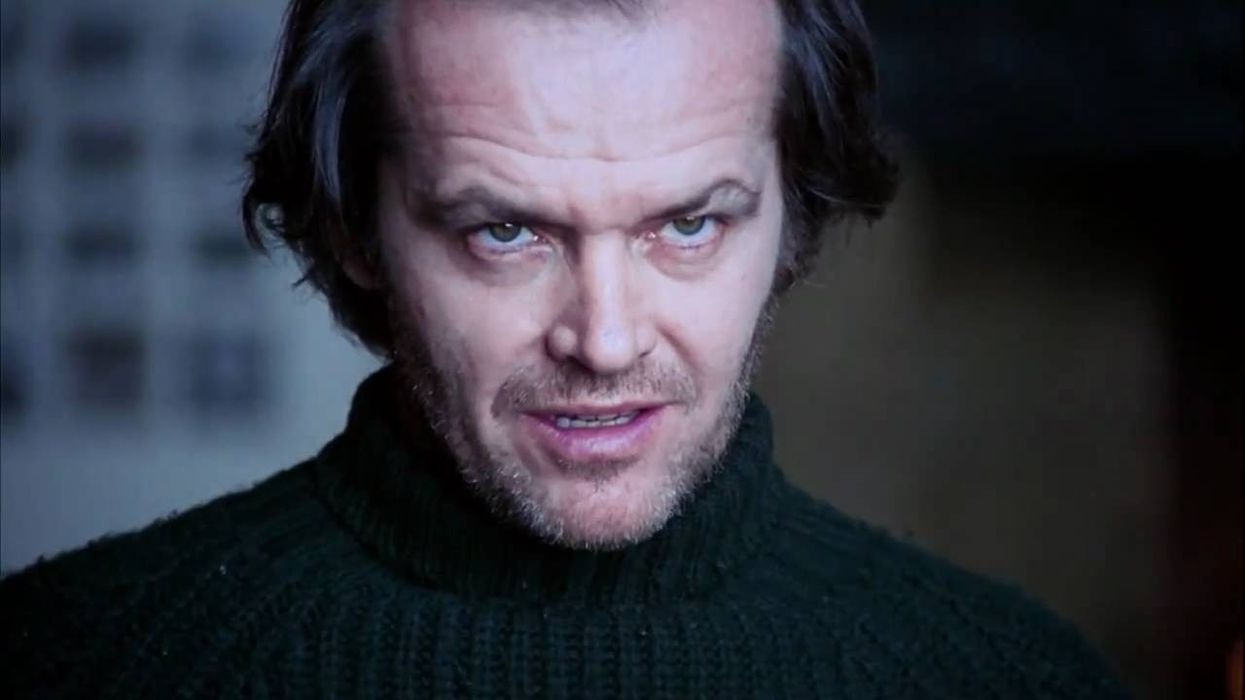Watch: What Makes 'The Shining' So Incredibly Disturbing?
Just in time for Halloween, this video essay examines the role of structure in The Shining's creepy delights.

There are plenty of scary movies, but The Shining is in a class all its own. Other than Psycho, which is, arguably, more of a thriller than a horror movie, no film in the genre has inspired more analysis and fandom than Stanley Kubrick's 1980 adaptation of Stephen King's novel. As Michael Tucker of Lessons from the Screenplay puts it in his new video essay, "Other movies may have moments that make me jump more, or keep me in more suspense about the characters’ survival, but The Shining disturbs me." And according to his analysis, the reason has a lot to do with the structure of the film itself.
Kubrick was not a fan of releasing screenplays, once saying that "a screenplay isn’t meant to be read, it’s to be realized on film." According to interviews with Kubrick's collaborator in adaptation, the novelist Diane Johnson, the director's approach "was to think in terms of time segments in relation to the totality of the film." To wit, The Shining is comprised of ten sections, with each one marked by a title card (or intertitle). At the beginning of the film, these titles serve their traditional cinematic function, viz. to orient us in time. The card below comes four weeks after the Torrance family moves in to The Overlook:
As the film progresses, though, and segments decrease in length, so does the distance between the title cards. This increased velocity adds suspense, of course, because the audience knows that something is coming. What is unique (at least among mainstream films) is the way the cards shed any pretense of temporal orientation, morphing into an incoherent pattern of random days, and, finally, moments in time. These lack a relationship to outside time that an audience could use to place itself in the film's "world."
Kubrick's inversion (and subversion) of time and the title card was something he had done before—though for different reasons and effects—in his previous film, Barry Lyndon. Here, it has the effect of being disorientating and disturbing; with an incredibly simple technique, Kubrick makes it seem as though the film itself is "quietly going insane," words he once used to describe the film's story.
This works so well because film audiences have been trained by decades of film grammar to trust the "objective" elements of narrative (e.g., the opening of the first Star Wars). By pulling the rug out from underneath the audience, as it were, Kubrick ups the menace without doing anything flashy, and this can have the effect of making the audience feel something while not knowing why.
"The point is that the frightening part of the story isn't what is going to happen, it's how it's going to happen."
Additionally, Tucker notes the ways in which traditional structural tropes of the genre are ignored from the film's beginning, like how the "mystery" of the film is revealed in the first half hour (oh, and listen for the "Shone" effect at :05 seconds, which is not creepy, at all, in any way):
As Tucker puts it, "The point is that the frightening part of the story isn't what is going to happen, it's how it's going to happen." The film relies, therefore, on the notion of creepiness, a concept defined in a study which Tucker cites as, "anxiety aroused by the ambiguity of whether there is something to fear or not and/or by the ambiguity of the precise nature of the threat." This pervasive sense of dread is everywhere in The Shining. To cite one of the most obvious examples, in a genre usually shrouded in shadow, The Shining takes place, for the majority of its running time, in well-lit rooms. The dread we feel from knowing something is coming, combined with the seemingly benign mise-en-scène, is a locus of creepiness.
Tucker also points to the infamous Grady twins, who appear "at a distance that makes it difficult to read their faces..." I will note that, in the "Game Room" scene, they smile and giggle to each other, but Tucker is correct in his assertion that, overall, their ambiguity of intent is very creepy, indeed.
This essay is a valuable addition to the plethora of commentary on this film. Perhaps the best way to sum up Tucker's approach to the film's secrets and their structural foundations can be found in the Diane Johnson quote he includes, a description of how she and Kubrick approached the script: “It must be plausible, use no cheap tricks, have no holes in the plot, no failures of motivation...it must be completely scary.”
Source: Lessons from the Screenplay


















